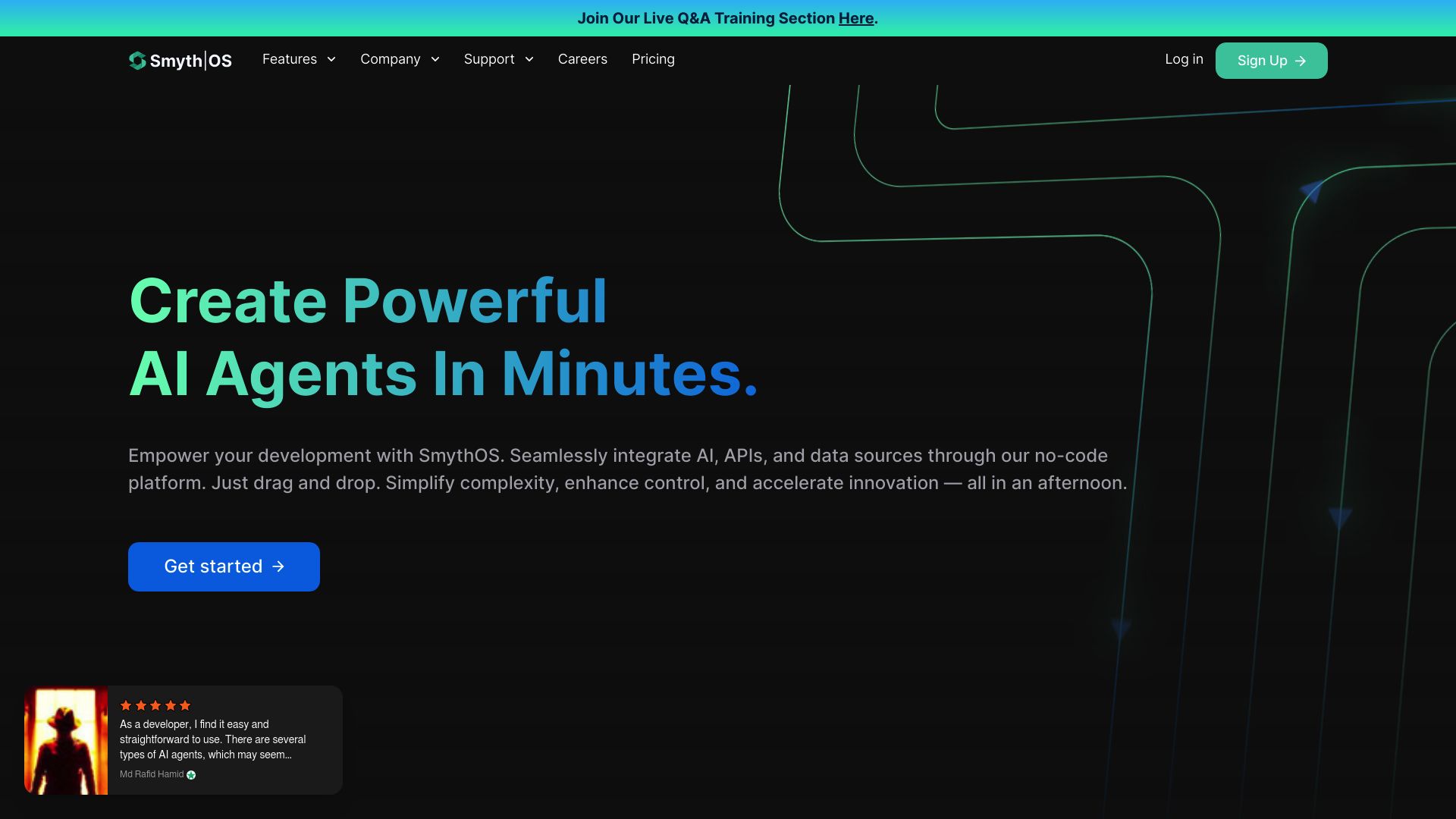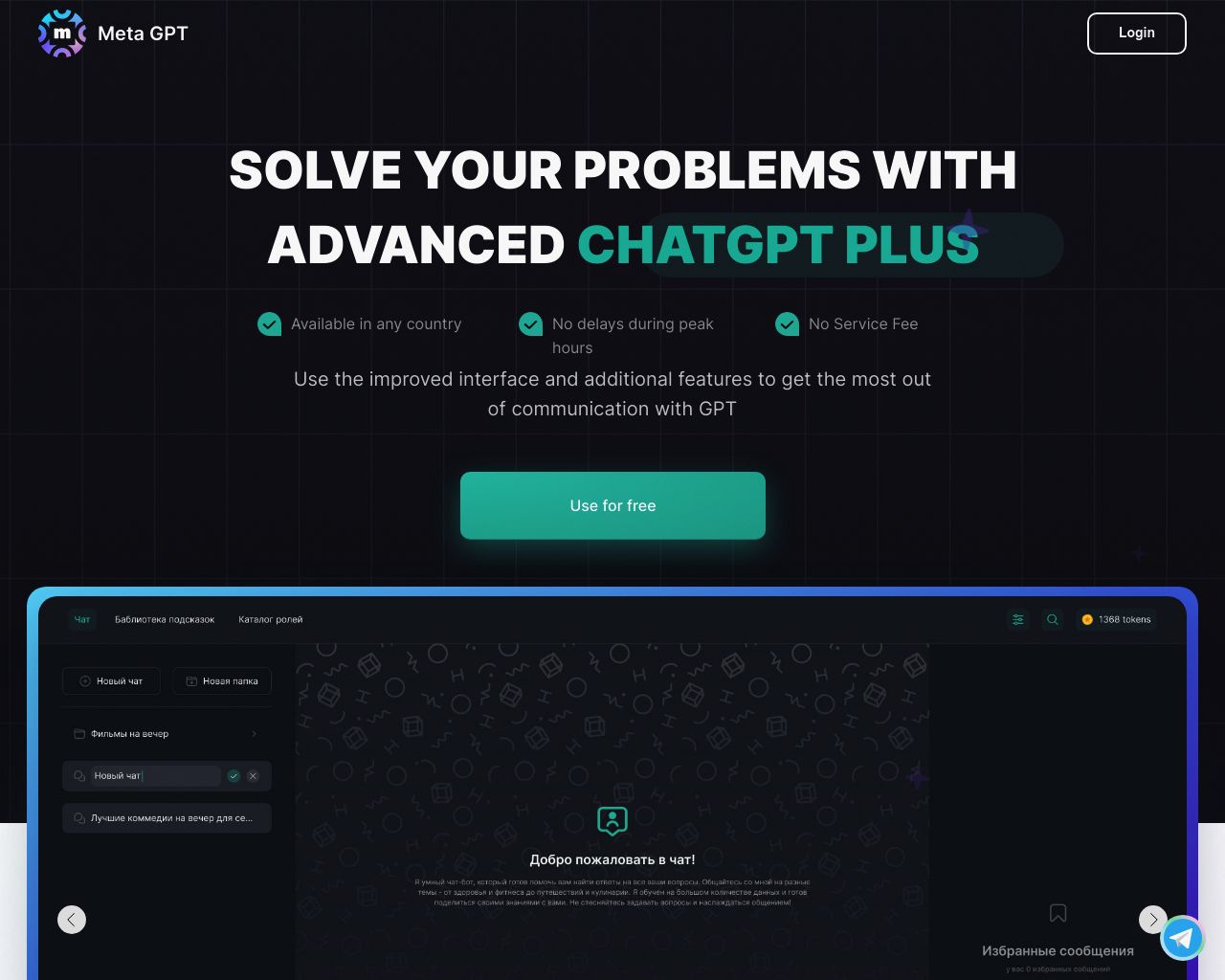AI development platforms SmythOS and MetaGPT offer powerful solutions for creating sophisticated AI agents, each with distinct approaches. SmythOS provides an intuitive visual builder and drag-and-drop interface, enabling users of all technical backgrounds to rapidly prototype and deploy AI solutions. MetaGPT simulates a software company structure, offering a unique framework for complex task management. This comparison explores their key features, integration capabilities, deployment options, and overall usability to help readers determine which platform best suits their AI development needs. Whether you’re a seasoned developer or a business leader looking to harness AI’s potential, understanding these platforms’ strengths and limitations will guide you in choosing the right tool for your projects.
SmythOS Overview
SmythOS revolutionizes AI agent development with its comprehensive platform. We’ve designed our system to empower users of all technical backgrounds to create, deploy, and manage sophisticated AI agents effortlessly.
Our drag-and-drop interface stands at the core of SmythOS, enabling rapid development of complex workflows without coding expertise. This visual builder simplifies the creation process, allowing users to construct AI agents that can handle a wide array of tasks, from customer service chatbots to advanced data analysis tools.
SmythOS revolutionizes AI agent development with its comprehensive platform… empowering users of all technical backgrounds to create, deploy, and manage sophisticated AI agents effortlessly.


SmythOS excels in its integration capabilities. Our platform seamlessly connects with various data sources, APIs, and AI models, facilitating the deployment of agents across multiple environments. Whether you’re looking to create a chatbot, a backend API, or an Alexa skill, SmythOS provides the flexibility to deploy your AI agents where they’re needed most.
SmythOS excels in its integration capabilities… seamlessly connects with various data sources, APIs, and AI models, facilitating the deployment of agents across multiple environments.
Our commitment to scalability and security sets us apart. SmythOS supports enterprise-level deployments while maintaining robust security measures, including data encryption and OAuth authentication. This ensures that as your AI needs grow, our platform grows with you, all while keeping your data and operations safe.
While SmythOS offers a wealth of features, users should note that the platform’s advanced capabilities might require a learning curve for those new to AI development. However, our extensive documentation and support resources aim to flatten this curve, enabling users to harness the full power of our platform quickly.
MetaGPT Overview
MetaGPT revolutionizes multi-agent collaboration by combining human Standardized Operating Procedures (SOPs) with advanced Large Language Models (LLMs). This open-source framework simulates a software company’s structure, assigning distinct roles to AI agents such as product managers, architects, and engineers.


MetaGPT’s core philosophy, “Code = SOP(Team),” integrates established human practices into AI-driven processes. This approach enhances the consistency and reliability of agent outputs, significantly reducing errors common in multi-agent systems. The platform breaks down complex tasks into manageable subtasks, each handled by specialized agents, ensuring more accurate and robust solutions.
MetaGPT’s core philosophy, “Code = SOP(Team),” integrates established human practices into AI-driven processes… enhancing the consistency and reliability of agent outputs, significantly reducing errors common in multi-agent systems.
MetaGPT generates comprehensive documentation throughout the development process, including requirement documents, design artifacts, and interface specifications. This feature enhances the success rate of final code and facilitates better human-AI interaction. The framework supports various deployment options, including APIs and webhooks, and integrates with popular AI models and tools.
While MetaGPT offers powerful capabilities, it may present challenges for users without technical backgrounds. The platform’s complexity could require a steep learning curve for those unfamiliar with software development processes or AI concepts. Additionally, as an open-source solution, it may lack some of the polished user interfaces and support services found in commercial alternatives.
Feature Comparison
SmythOS and MetaGPT offer distinct approaches to AI agent development, each with unique strengths and limitations. SmythOS provides a comprehensive visual builder with drag-and-drop functionality, enabling users to create complex AI workflows without extensive coding knowledge. This feature significantly reduces the barrier to entry for non-technical users, allowing them to rapidly prototype and deploy AI solutions. In contrast, MetaGPT’s framework focuses on simulating a software company structure, which may require more technical expertise to implement effectively.
While both platforms support multi-agent collaboration, SmythOS excels in providing a more user-friendly interface for orchestrating these interactions. Our platform offers pre-built API integrations and templates, streamlining the process of connecting AI agents to various data sources and services. MetaGPT, on the other hand, emphasizes a more code-centric approach, which may offer greater flexibility for experienced developers but could be challenging for those without a strong programming background.
In terms of security and deployment options, SmythOS stands out with our robust set of features. We offer advanced data encryption, OAuth integration, and IP control capabilities, ensuring that AI agents can be deployed securely in enterprise environments. Additionally, our platform supports a wide range of deployment options, including APIs, webhooks, and chatbots, with built-in scalability features. While MetaGPT provides some deployment flexibility, it may not match the comprehensive security and deployment ecosystem that SmythOS offers out of the box.
Feature Comparison Table
| SmythOS | MetaGPT | ||
|---|---|---|---|
| CORE FEATURES | |||
| Visual Builder | ✅ | ❌ | |
| No-Code Options | ✅ | ❌ | |
| SECURITY | |||
| IP Control | ✅ | ❌ | |
| COMPONENTS | |||
| Data Lakes | ✅ | ❌ | |
| DEPLOYMENT OPTIONS (EMBODIMENTS) | |||
| Staging Domains | ✅ | ❌ | |
| DATA LAKE SUPPORT | |||
| Hosted Vector Database | ✅ | ❌ | |
| Sitemap Crawler | ✅ | ❌ | |
| YouTube Transcript Crawler | ✅ | ❌ | |
Conclusion
SmythOS and MetaGPT offer powerful solutions for AI agent development, each with distinct strengths. SmythOS shines with its user-friendly visual builder, extensive integration capabilities, and robust security features. Our platform democratizes AI development, allowing users of all technical backgrounds to create sophisticated agents effortlessly.
MetaGPT’s innovative approach to simulating software company structures provides a unique framework for complex task management. However, its code-centric nature may present challenges for non-technical users.
While both platforms have their merits, SmythOS stands out for its versatility and accessibility. Our drag-and-drop interface, coupled with pre-built integrations and templates, significantly reduces development time and complexity. This makes SmythOS an ideal choice for businesses looking to rapidly prototype and deploy AI solutions without extensive coding knowledge.
We invite you to experience the power of SmythOS firsthand. Create a free account today and start building your own AI agents with our diverse range of templates. Discover how SmythOS can transform your workflow and unleash the full potential of AI for your business. With our 30-day money-back guarantee and unlimited free agent creation, there’s no risk in exploring the future of AI automation. Get started now and join the AI revolution with SmythOS.